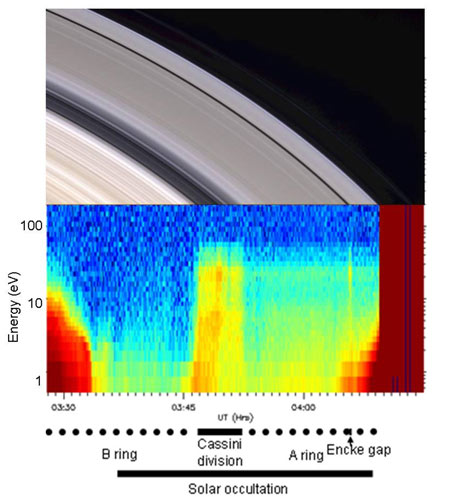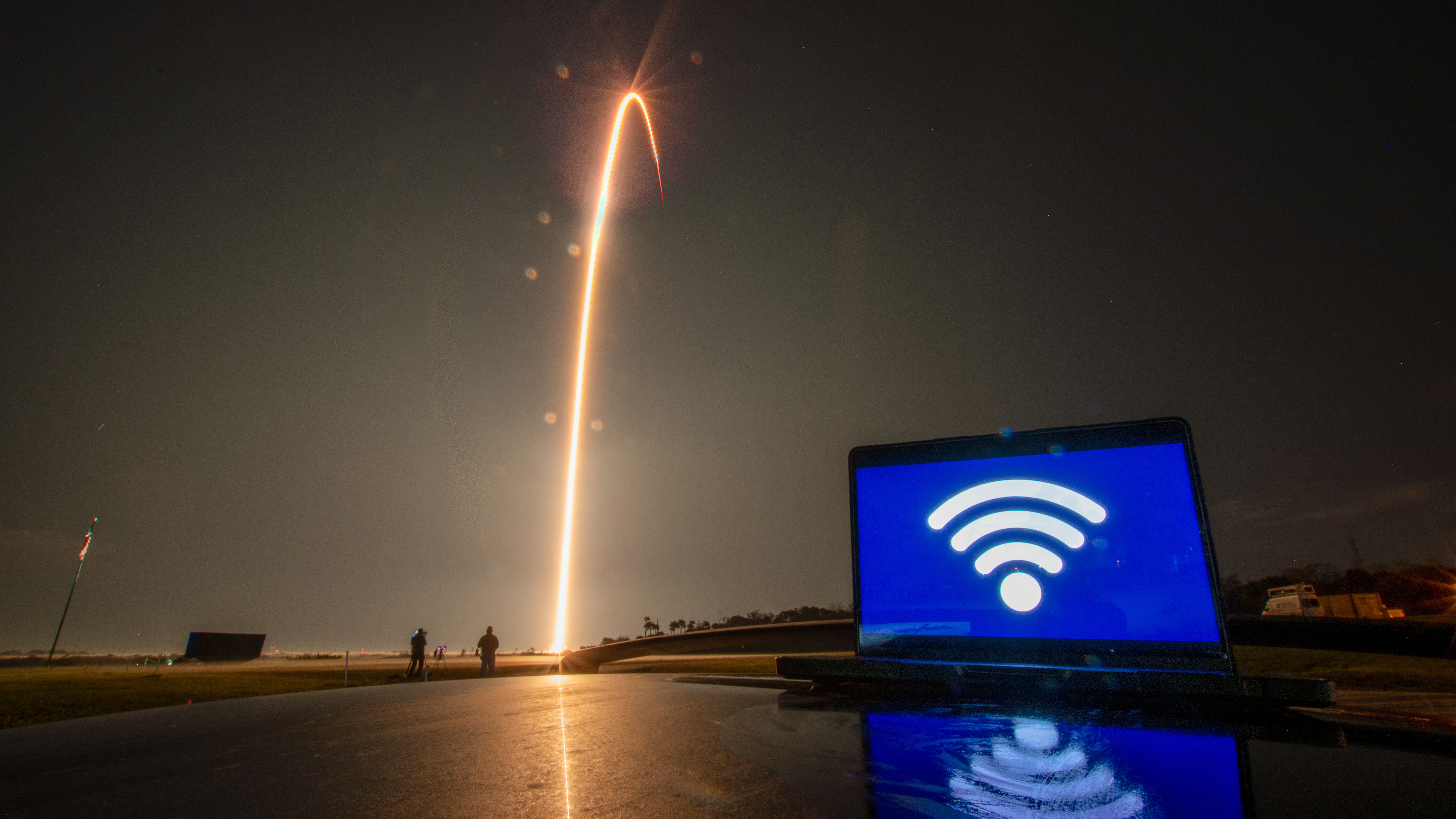Rings Too Good for Saturn, Have Own Atmosphere

New data from the Cassinispacecraft indicates that Saturn's trademark ringshave their own atmosphere, separate from the gas around the planet theyencircle.
During close fly-bys of the rings, instruments on Cassini detected that the environment around the rings isatmosphere-like. More interestingly, though, is that the ring atmosphere ismade up of molecularoxygen - two atoms of oxygen bonded together - like that found in Earth'satmosphere.
The ice thatmakes up Saturn's rings is also the source of the oxygen that makes up thisatmosphere.
"As water comes off the rings, it is split by sunlight; theresulting hydrogen and atomic oxygen are then lost, leaving molecular oxygen,"said Cassini investigator Andrew Coates of the Mullard Space Science Laboratory at University CollegeLondon.
Saturn's rings are made up mostly of water ice along withsmall amounts of dust and rocky bits. Ultraviolet rays from the Sun pry thewater molecules loose from the rings and split them into their building blocks- hydrogen and the two forms of oxygen - by a process called photodissociation.
The ring atmosphere is probably kept in place bygravitational forces, Coates says. The check-and-balance between the loss ofmaterial from the ring system and a re-supply from the ring particles alsohelps.
Although the rings are about 155,343 miles (250,000kilometers) in diameter, they are actually quite thin, less than a mile (1.5kilometers). And even though the rings appear gigantic, there actually isn't awhole lot to them. If all the rings were squeezed into one solid ring, it wouldbe no more than 62 miles (100 kilometers) across.
Get the Space.com Newsletter
Breaking space news, the latest updates on rocket launches, skywatching events and more!
Sky-watchers have gazed at Saturn's rings for centuries, butthe rings' origin is still somewhat of a mystery. Initially, scientists thoughtthat the rings formed from swirling clouds of cosmic gas around the same timeas the planets about 4 billion years ago. The current belief, however, is thatthey are only a few hundred million years old.
Other theories suggest that the rings were formed by variousasteroid collisions with Saturn's moons or from broken-up comets.
The rings are not stable and are constantly regenerated,most likely from the break-up of Saturn's satellites.
The ring system's oxygen atmosphere differs drastically fromthe atmosphere of Saturn itself - Saturn'satmosphere is 91 percent hydrogen by mass.
The instruments aboard Cassinithat registered the rings' atmosphere were the Ion and Neutral MassSpectrometer - operated by the United States and Germany - and the Cassini Plasma Spectrometer, which is operated by the US,Finland, France, Hungary, Norway, and the United Kingdom.
- Scrutinizing Saturn: Astronomers Get Best Views Ever
- Snowball Fight in Saturn's Rings
- Rings of Saturn Seen in New Light
- Best Hubble Images Ever
Join our Space Forums to keep talking space on the latest missions, night sky and more! And if you have a news tip, correction or comment, let us know at: community@space.com.









